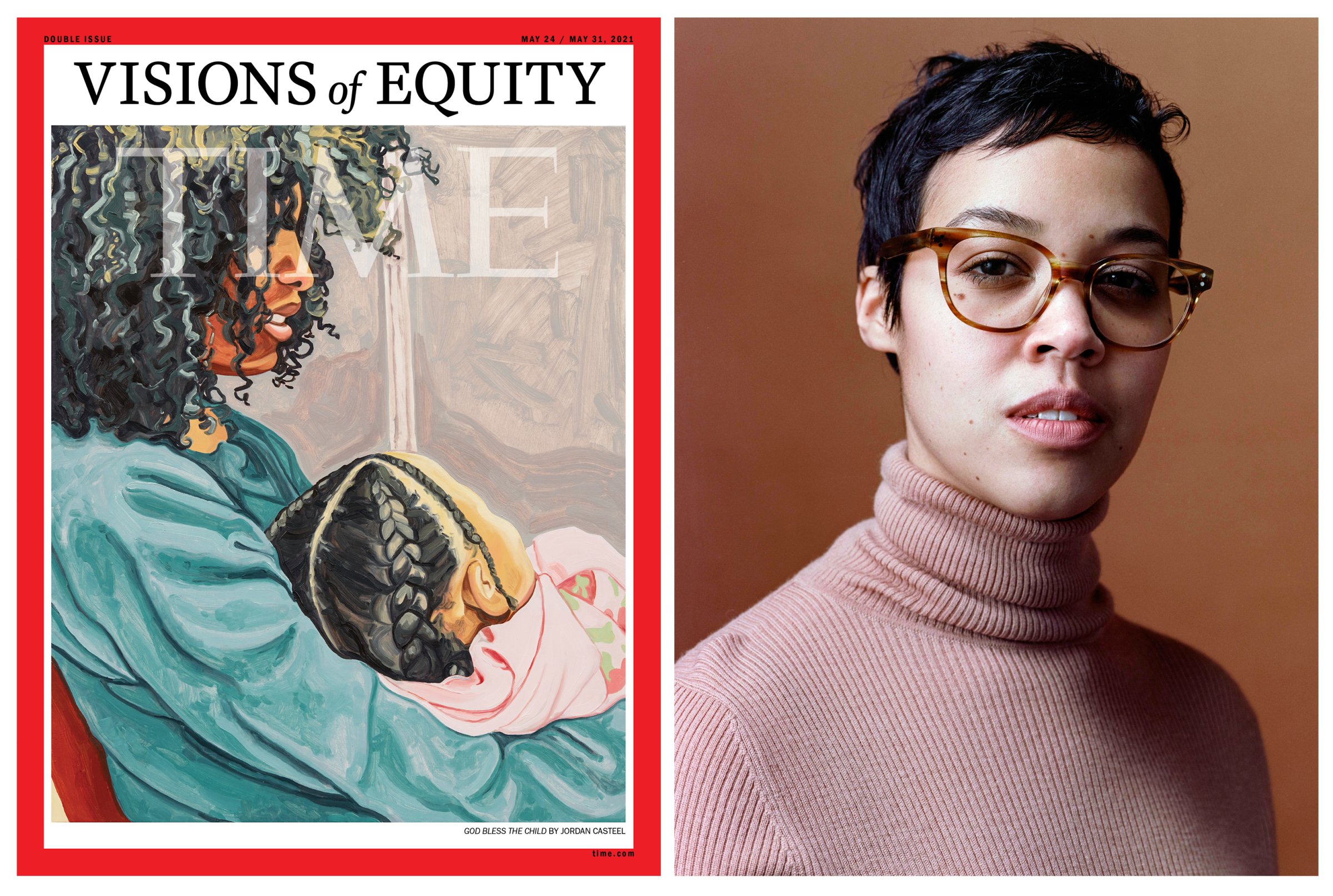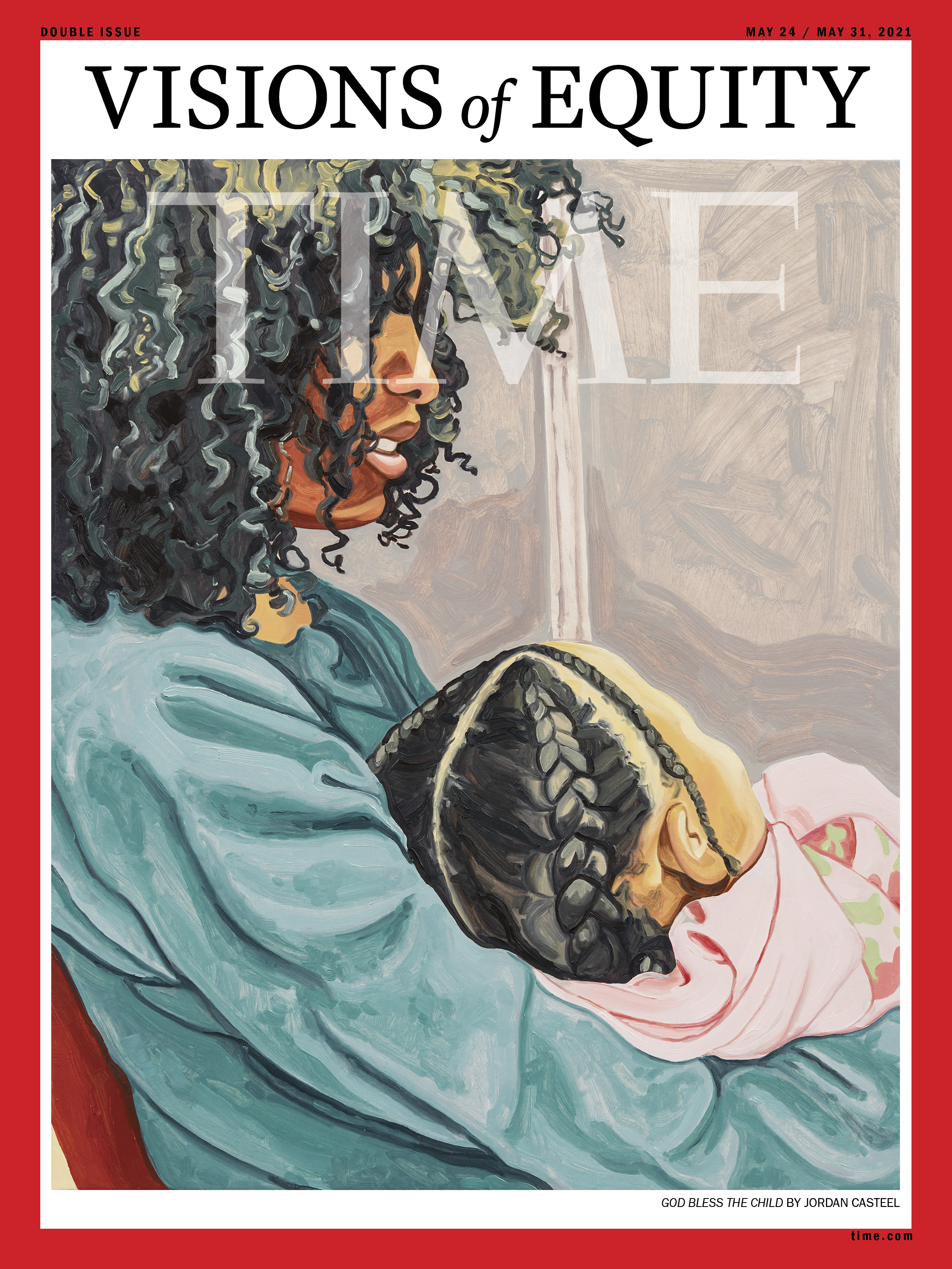
For this week’s special issue, Visions of Equity, we turned the cover over to Jordan Casteel, an American figurative painter whose artwork, God Bless the Child, captures exactly what the team working on this package had hoped for: intimacy, hope and care for our communities.
“The paintings are a relationship between my environment and me,” says Casteel, 32, who centers her practice in community engagement, painting from photographs of people she encounters or knows personally. She describes her craft as an “exploratory practice” based on a desire to understand who people are as individuals.
Visions of Equity is a special project conceived and curated by TIME’s BIPOC staff, featuring stories about the fight for racial justice and ways to build a better world. Those of us leading the project were blown away when we saw God Bless the Child. Casteel’s mother named the painting after the Billie Holiday song. Casteel said she particularly loved rendering the hair. “It feels familiar,” she says. “I see myself represented in this work.”

Her grandfather was Whitney M. Young Jr., a civil rights leader who dedicated his life to the work of building a more equitable society and driving equal opportunities for Black Americans. Casteel believes his work helps inform what she accomplishes through her own art. Born in Denver, Casteel received her B.A. from Agnes Scott College in Georgia and her MFA from the Yale school of Art. She lives and works in New York City, where she presented her solo exhibition titled “Within Reach” at the New Museum in 2020. She is also an associate professor of painting at Rutgers University.
Casteel describes herself as an empath and, in our conversations, we discussed how crucial empathy is for building a better, more equitable world. She expressed that it is important to her in her pursuit of equity, both personally and writ large, that her work is valued for its inherent quality. “Pushing for equity and all it entails is hard,” Casteel says. “I want to be sure that my work is valued and remarkable for the qualities it has.”
For Casteel, that justifiable concern reflected a broader one many of us share around losing control of our own narratives in a world that so often wants to limit us to the labels of our identities. Casteel may be a Black artist who creates images of Black people, but she is also an artist who uses her work to synthesize a relationship between herself and others. “It is important that our narratives expand,” she says, “that the narrative around my work not be narrowed to my identity.”
More Must-Reads from TIME
- Introducing the 2024 TIME100 Next
- The Reinvention of J.D. Vance
- How to Survive Election Season Without Losing Your Mind
- Welcome to the Golden Age of Scams
- Did the Pandemic Break Our Brains?
- The Many Lives of Jack Antonoff
- 33 True Crime Documentaries That Shaped the Genre
- Why Gut Health Issues Are More Common in Women
Contact us at letters@time.com